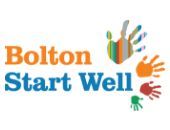Enrichment – Case Studies
CASE STUDIES
Read what other settings/schools have done to enrich reading experiences at home:
This shows how bringing books alive for children can help children to fall in love with books. A Note from Mrs. Bowers, a Classroom Teacher
Often children tell me that they do not like to read. I tell them that reading is a tool. It’s like a hammer. Would you say, “I don’t like hammers, so I won’t use one to drive a nail into the wall?” Probably not. You would use the hammer because that’s the best tool to use. The same thing applies to reading. Reading is a tool for learning about the world. One of my fourth-grade students, loved skateboarding, but hated to read. Once he began reading about skateboarding, he began to love reading, and his reading skills improved. Learn your child’s interests and take a virtual or in-person trip to the library to get books based on those interests. (School Choice for kids.org)
1. Case study
As a nursery we have spent a lot of time supporting parents to enrich children’s vocabulary development.
[expand title=”CLICK HERE to read more“]
We believe that young children need to learn a rich and varied vocabulary which includes words from different category types:
- Object words – nouns
- Action words – verbs
- Describing words –adjectives/prepositions/adverbs
It is estimated that children of 6 years have a vocabulary of 14,000 words. In order to achieve this child between 18 months and 6 years would need to learn 8 new words a day. The role of vocabulary is shared between home and educational settings then settings would need to plan opportunities for 2–4-year-old to learn 5 new words a day with 3 being learnt at home.
To support parents to do this we share the following strategies:
- Start from the child’s interest – children are more likely to listen and use vocabulary that is linked to what they are interested in.
- Talk about what the child is doing – by doing this your child is more likely to listen if adults are following their lead.
- Introduce simple vocabulary first – reinforce words over and over again
- Give children time to think and respond
- Model the words – ensure you clearly say the word so the child can hear examples
- Provide multi-sensory activities – allow children to explore objects in different way, through smell, touch, taste. This will give children opportunity use a variety of words.
- Involve parents/carers so that vocabulary can be reinforced at home too.[/expand]








